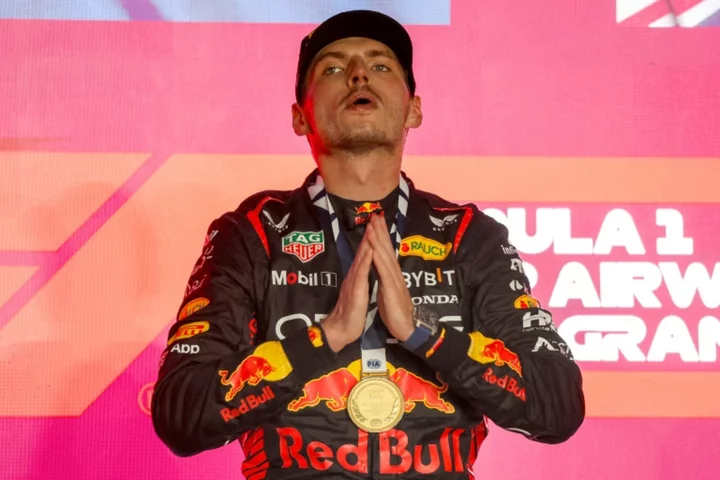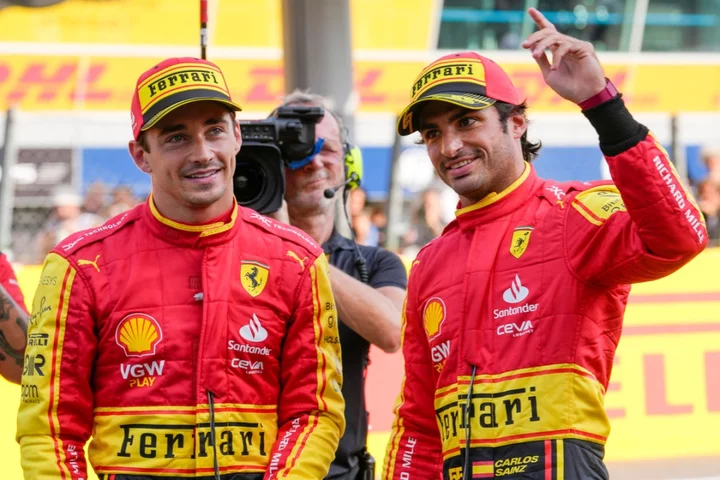Another masterful display and triumph from Max Verstappen ensured that Red Bull's newly-crowned three-time world champion celebrated a magnificent personal landmark weekend in style.
But his 49th career victory and 14th in 17 races this year at the Qatar Grand Prix will be remembered more for the "hellish" racing conditions and physical demands that left drivers declaring it was "dangerous" and "beyond any acceptable limit".
AFP Sport looks at three things we learned from Sunday's race at the sun-baked Lusail International Circuit where cockpit temperatures soared beyond 50 degrees Celsius:
Verstappen dominant, rivals catching up
There was no doubt about Verstappen's continuing overall supremacy, but Australian rookie Oscar Piastri's maiden win for McLaren in Saturday's sprint race and his runner-up finish behind the 26-year-old Dutchman confirmed they are being caught.
The question, however, is less about the remaining five races and more about 2024.
"They are getting closer," said Verstappen. "McLaren are making great steps forward and have done all year. We'll try to improve a little bit this year, but, of course, mainly for next."
Verstappen's friend and rival Lando Norris finished third for McLaren and made clear his team are enjoying their successes.
"They like the taste and it is the first time they've been getting it consistently and it makes them want it more every weekend so the guys are all doing a great job."
Drivers at risk
The scheduling of the Qatar event for early October and a lack of pre-event preparation of the circuit left a sour taste in the mouths of many drivers, several of whom vomited in their helmets as acute dehydration left them in severe distress.
Not only was the race held on an inappropriate date when the temperatures were intolerably high for many, but the resurfaced track's kerbs threw up dangerous problems for tyres on Friday, requiring overnight repairs –- and a revision of the tyre rules for Sunday's race.
These forced the drivers to make three pit-stops, ensuring they raced flat out for the full 57 laps without care for tyre conservation, a factor in the spate of dangerous outbreaks of fainting, nausea and dehydration during the race.
High temperatures exceeded acceptable limits
Several drivers pointed out that the organisers were aware of the profile of the kerbs and character of the track following the 2021 race, run on much narrower tyres before switching from 660 mms to 720 mms.
Mercedes' George Russell, a director of the Grand Prix Drivers' Association, said he felt close to passing out. "It was beyond the limit of acceptability," he said.
"More than 50 percent of the grid said they were feeling sick, couldn't drive and were close to passing out. You don't want to be passing out at the wheel, when you are driving at 200 mph."
The race was the first in a 10-year contract with Qatar, reported to be worth $55 million per year to F1's American owners Liberty Media.
Next year's race is scheduled for December, when last year's World Cup took place.
"It has nothing to do with needing more training," said Verstappen, who cited Singapore as another over-hot venue. "Some of the guys who struggled here are extremely fit, probably fitter than me, but it's too much. It's just too hot.
"Obviously, we need discussions about a lot of things from this weekend. It's not a good situation to be in."
str/dmc/jc









